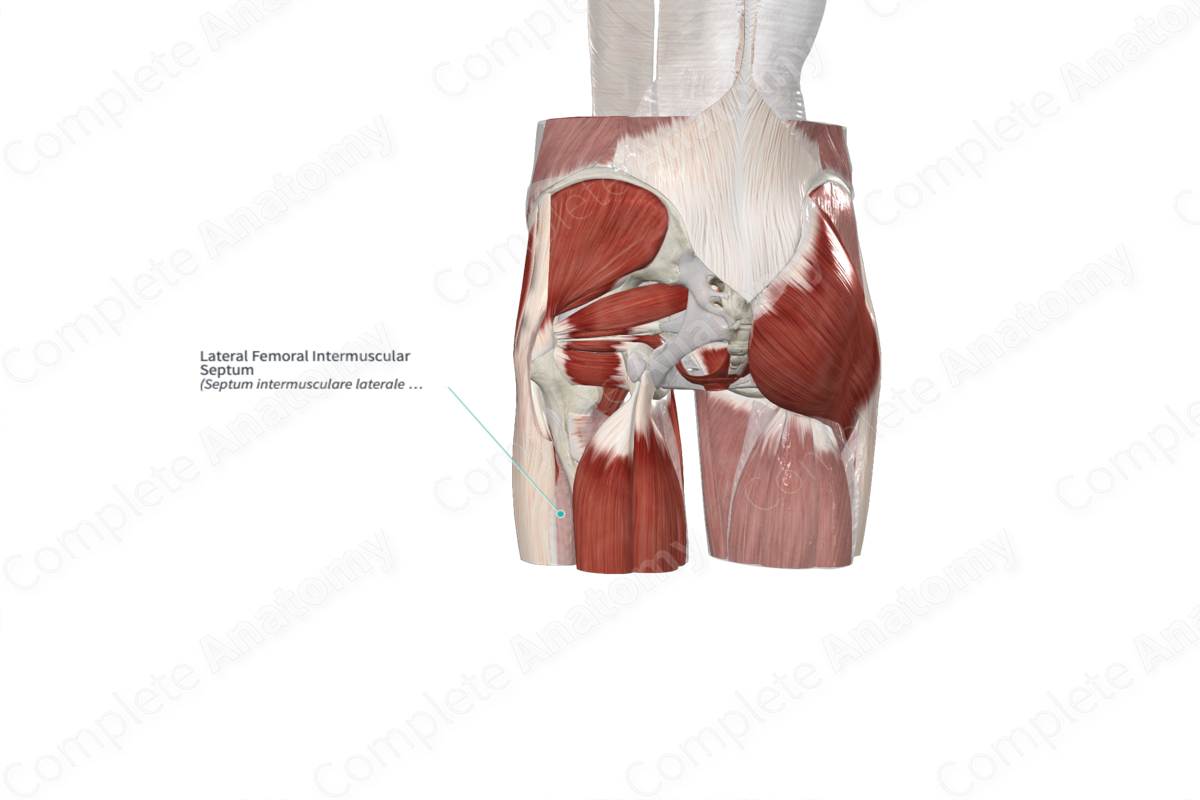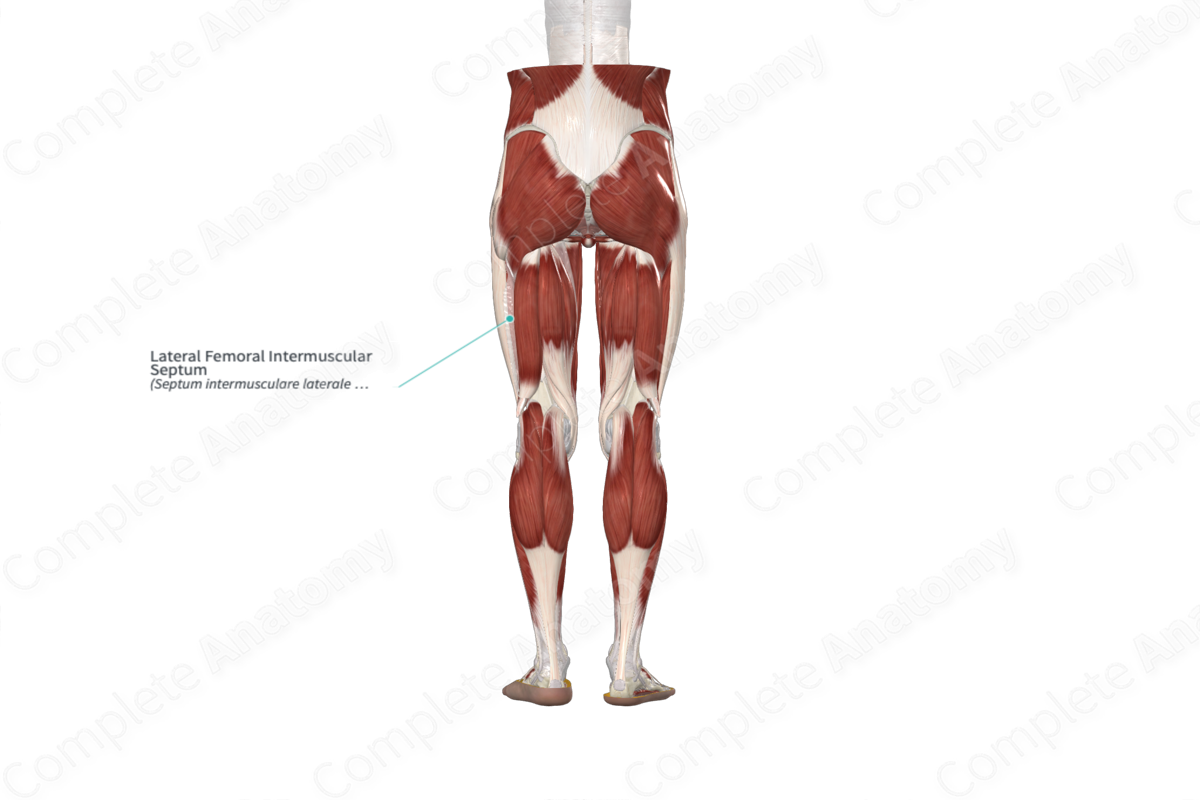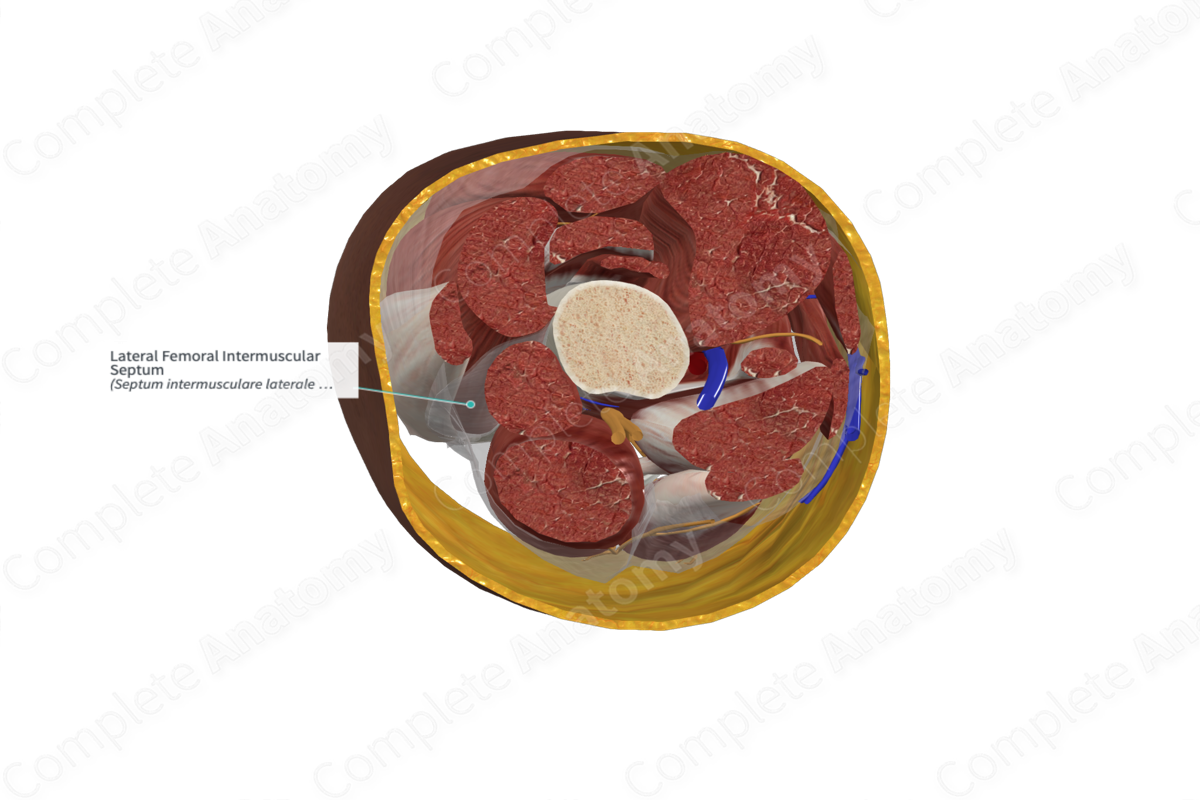
Lateral Femoral Intermuscular Septum
Septum intermusculare laterale femoris
Read moreStructure
The lateral femoral intermuscular septum (or lateral intermuscular septum of the thigh) is a dense fold of deep fascia, which invaginates between the muscles of the thigh; separating the anterior and posterior compartments of the thigh from each other.
The septum extends from the fascia lata to attach along the length of the linea aspera on the shaft of the femur. It extends superiorly as far as the gluteal crest and reaches the lateral condyle of the femur inferiorly.
The other major septa include the medial and posterior femoral intermuscular septa. The lateral intermuscular septum is strong and least compliant, whereas the medial and posterior intermuscular septa are much thinner. Besides the major septa, there are numerous smaller septa, which separate the individual muscles from each other and enclose them in their distinct fascial sheaths.
Related parts of the anatomy
Anatomical Relations
The lateral intermuscular septum is related anteriorly to the vastus lateralis, a quadriceps muscle. The biceps femoris, a hamstring muscle, serves as the immediate posterior relation of the septum.
Function
Septal compartmentalization of the thigh helps to provide support to the soft tissue structures; including muscles, vessels, and nerves. The lateral intermuscular septum separates the anterior and posterior compartments of the thigh from each other and gives partial origin to the vastus lateralis and the short head of biceps femoris muscles.
Less commonly, but importantly, the lateral intermuscular septal tissue has also been used for fascial grafting. The functional deficit in the thigh, resulting from harvesting the lateral intermuscular septum, is minimal (Hayashi and Maruyama, 2001).
List of Clinical Correlates
—Compartment syndrome
References
Hayashi, A. and Maruyama, Y. (2001) 'Lateral intermuscular septum of the thigh and short head of the biceps femoris muscle: an anatomic investigation with new clinical applications', Plast Reconstr Surg, 108(6), pp. 1646-54.


